19 Jan 2021
Works from the Collection: Audrey Capel Doray
-
Audrey Capel Doray
ArtistAudrey Capel Doray (b. 1931) is a Canadian artist working in a variety of mediums—painting, printmaking, electronic art, murals and films. She received a BFA from McGill University and went on to study at Atelier 17 in Paris and at the Central School of Art in London. After moving to Vancouver in 1957, Capel Doray taught at the Vancouver School of Art (now Emily Carr University) from 1959 to 1961. In 1962, Capel Doray joined Alvin Balkind and Abraham Rogatnick’s New Design Gallery, an influential art space that presented live theatre, visual art, films, concerts, lectures and poetry readings. Capel Doray was a major figure in the Vancouver scene of the 1960s and was engaged with experiments in new media, interactive and kinetic art and electronic communications. She and her late husband, Victor Doray, were community leaders, involving themselves in Intermedia and other experimental formations influenced by philosopher Marshall McLuhan. A recipient of four Canada Council awards, Capel Doray’s work is held in numerous private and public collections, both nationally and internationally. Her work is described in North American Women Artists of the Twentieth Century as combining “robust social criticism with her own interpretation of humanist theory” and dealing with pop art and the feminist archetype, themes of “perpetual motion and endless transition”, and the interplay of sound and light.
Read More
Audrey Capel Doray
paintings and sculpture from the mid to late 1960s
Collection of the Morris and Helen Belkin Art Gallery
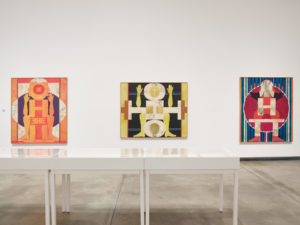
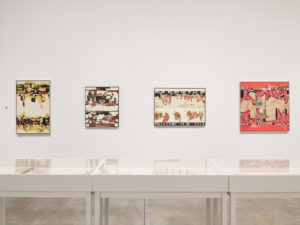
Audrey Capel Doray’s paintings in Stations: Some Recent Acquisitions use a technique that she refers to as “lift-off, as described in a 2008 conversation: “Vortex and this series of work seemed to predict what I was going to be doing even though unbeknownst to me. There seemed to be a sense of movement, a sense of motion quality to it that comes from a ring of scintillating colour that tended to make the images spin. I was using a lift-off technique that I discovered by accident where I took glossy pages of a magazine – this was a time when Life magazine had wonderful images, you could find anything you wanted. The lift off involved putting acrylic on the surface, placing the glossy page on the acrylic and letting it sit, sensing how dry it should become; I wet the paper and the clay surface and the ink printed itself on the surface and I could rub the surface away so I was just left with the image without the page.”
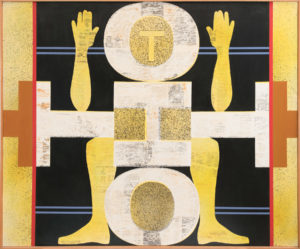
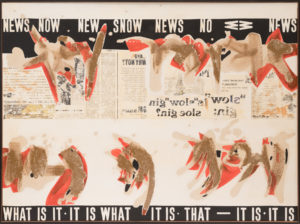
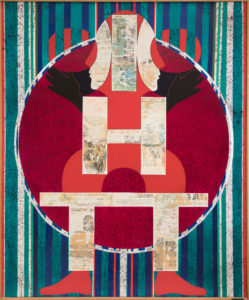
Doray was a pioneer of interactive and multimedia art that incorporated computers, lighting and electronics, working with Glenn Toppings and Bob Mills in her early career. Armoured Lady (1968/2011) is one of a number of sculptural works that Doray made using mannequin forms: “I had initially thought I would do a cast of a body and then, lo and behold, the display units for women’s lingerie were making a conversion from hard clear plastic to Styrofoam so all these became garbage and I collected a lot of them. I decorated the inside of the bust in the same way that I had done Hexagon, using the lift-off technique. Armoured Lady sits on a stand and has an audio component as well, with the two lights on the dress going off and on at approximately a breathing rate. So when the percussion sound happened to hit, the light changed and you connected with the piece; this was happening at random points which was so much better than synchronized, as I had originally planned.”
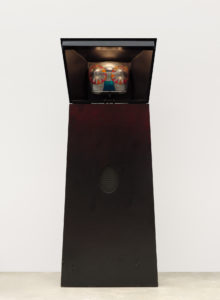
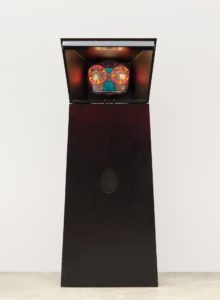
Over the course of Stations: Some Recent Acquisitions, we will consider works from the Belkin’s permanent collection through the lens of the pandemic world around us, in particular through the words of the artists themselves. Works from the Collection extends these works from the gallery space to the intimacy of the home; to see more of the Belkin’s collection, visit https://collection.belkin.ubc.ca.
Watch the 2008 interview with Audrey Capel Doray
Images (from top): Audrey Capel Doray, The Big Bien (1964); installation images from Stations; Hieroglyphic Man I (1965); News Now (1964); Hieroglyphic Man III (1965); Armoured Lady (1968/2011). Photos: Rachel Topham Photography
The above quotations are from a July 26, 2008 discussion with Audrey Capel Doray and Joan Balzar in conversation with Lorna Brown in conjunction with the exhibition Idyll at the Morris and Helen Belkin Art Gallery
-
Audrey Capel Doray
ArtistAudrey Capel Doray (b. 1931) is a Canadian artist working in a variety of mediums—painting, printmaking, electronic art, murals and films. She received a BFA from McGill University and went on to study at Atelier 17 in Paris and at the Central School of Art in London. After moving to Vancouver in 1957, Capel Doray taught at the Vancouver School of Art (now Emily Carr University) from 1959 to 1961. In 1962, Capel Doray joined Alvin Balkind and Abraham Rogatnick’s New Design Gallery, an influential art space that presented live theatre, visual art, films, concerts, lectures and poetry readings. Capel Doray was a major figure in the Vancouver scene of the 1960s and was engaged with experiments in new media, interactive and kinetic art and electronic communications. She and her late husband, Victor Doray, were community leaders, involving themselves in Intermedia and other experimental formations influenced by philosopher Marshall McLuhan. A recipient of four Canada Council awards, Capel Doray’s work is held in numerous private and public collections, both nationally and internationally. Her work is described in North American Women Artists of the Twentieth Century as combining “robust social criticism with her own interpretation of humanist theory” and dealing with pop art and the feminist archetype, themes of “perpetual motion and endless transition”, and the interplay of sound and light.
Read More
Related
-
Event
Stations: A Selection of Films
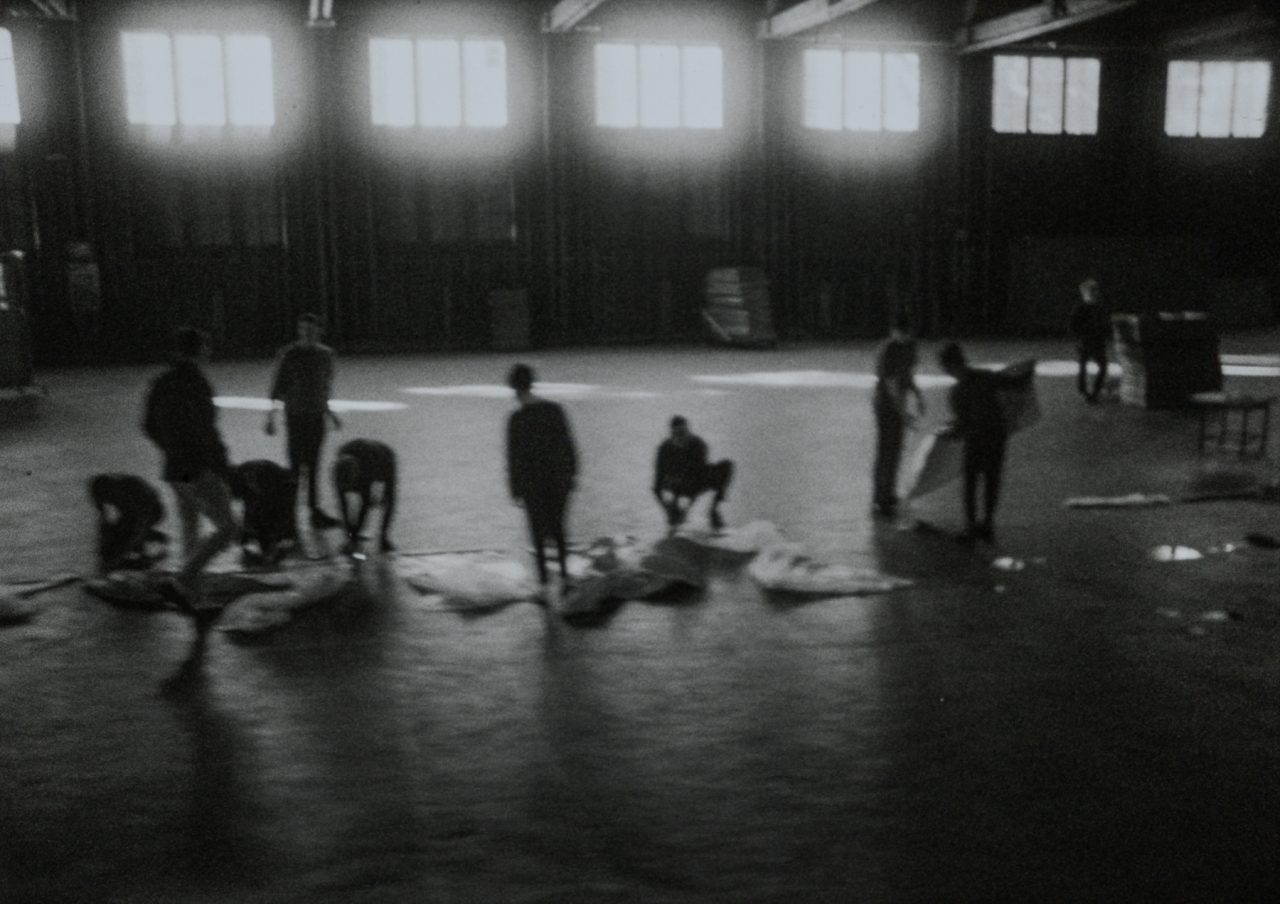
Stations draws on recent acquisitions to the permanent collection and is organized into interrelated modules that explore some of the Belkin’s research areas. While the physical gallery remains open to the public, COVID-19 has pushed us to rethink our exhibitions. With the increased turn to our website, we are including here a selection of films that are also being screened in the gallery space.
[more] -
Exhibition
8 Jan – 11 Apr 2021
Stations: Some Recent Acquisitions
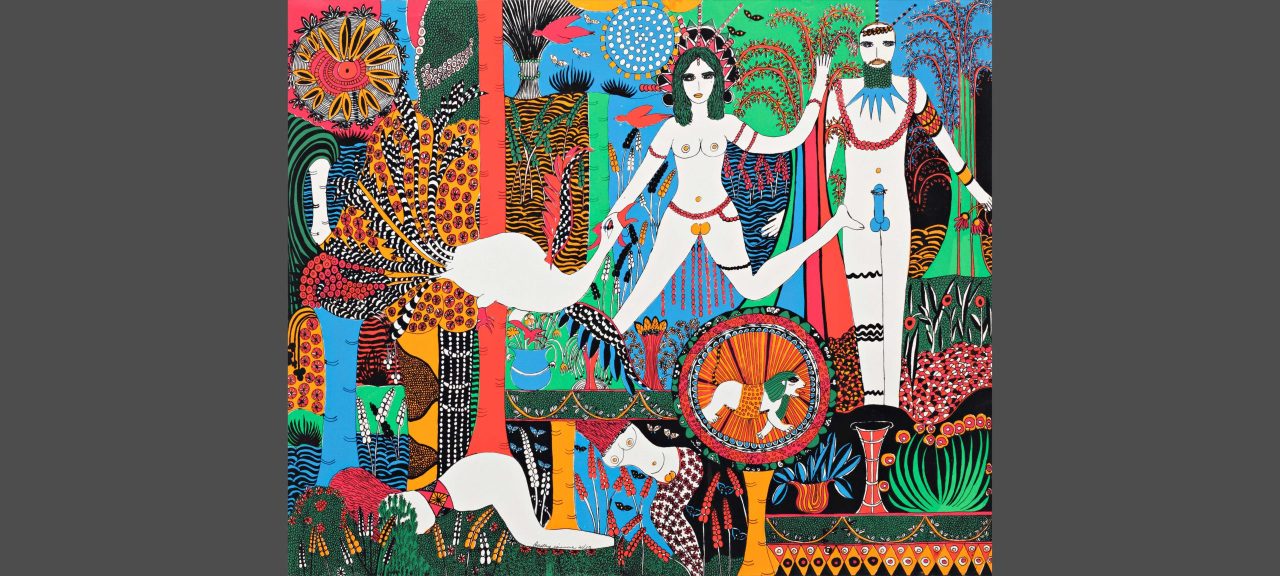
Due to the uncertainty caused by the COVID-19 pandemic, we are postponing the Image Bank exhibition until June 2021. Our January exhibition will draw on recent acquisitions to the permanent collection. Titled Stations: Some Recent Acquisitions, the exhibition will be in four or five interrelated modules that explore some of the gallery’s research areas.
[more] -
News
11 Jan 2021
Works from the Collection: Rhoda Rosenfeld
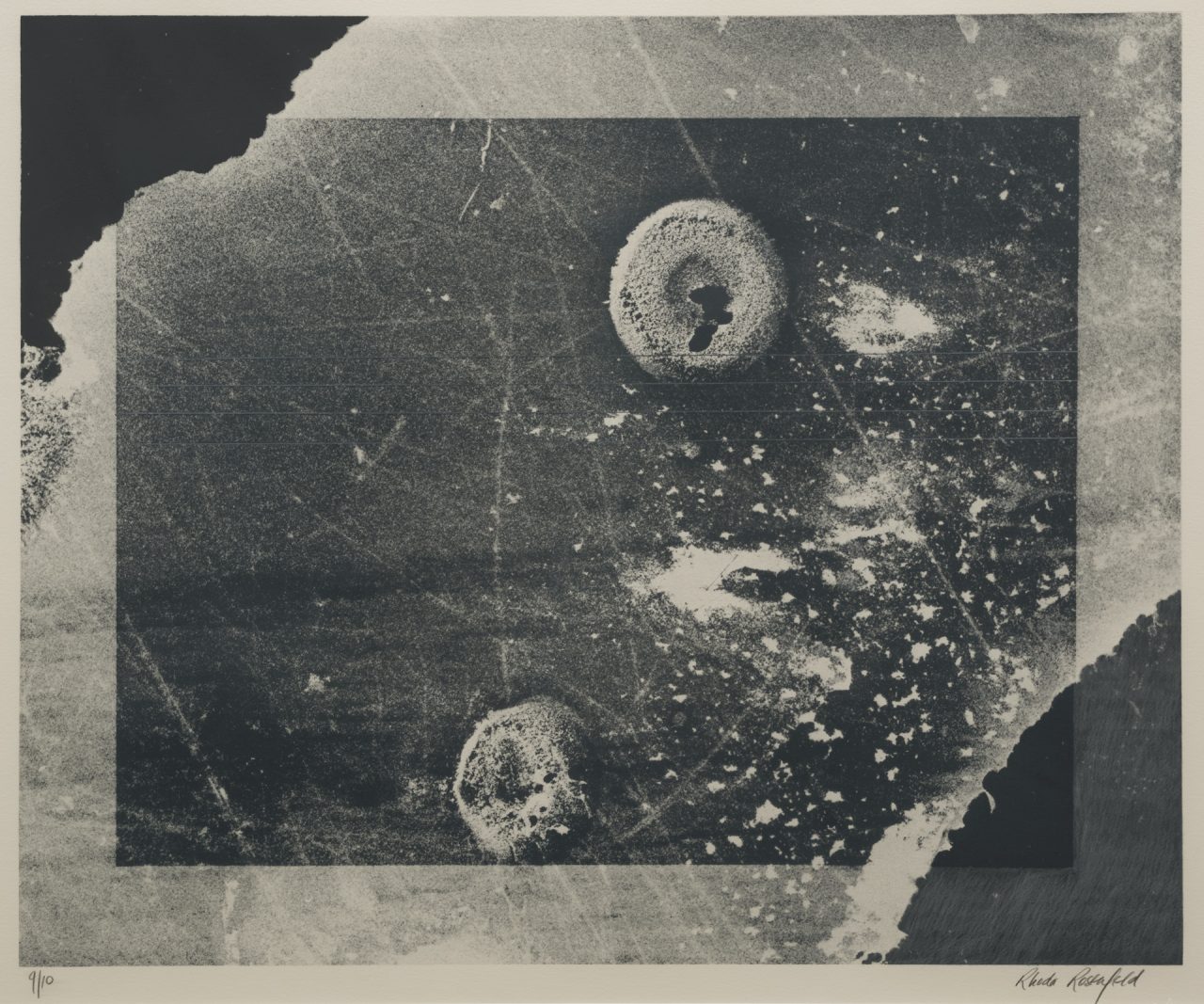
Rhoda Rosenfeld's work from the series Maps of the World (1977) is included in Stations: Some Recent Acquisitions.
[more] -
News
04 May 2020
Works from the Collection: David Horvitz
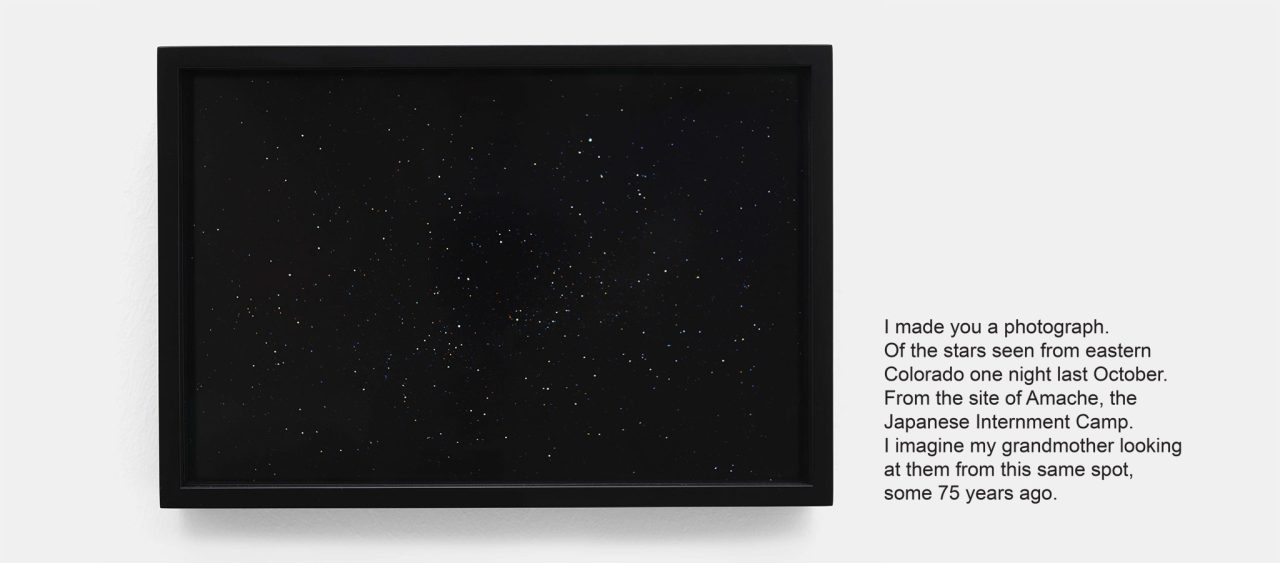
Scott Watson looks at David Horvitz's 2017 For Kiyoko through the lens of the current crises.
[more] -
Event
Everything This Changes

Everything This Changes is programming initiated in response to the COVID-19 pandemic that has shut the doors of galleries and many businesses while keeping most of us working at home. Everything This Changes adds to the Belkin’s online presence as a platform for works of art, research projects, podcasts, interviews, conversations and events. One of our tasks is to explore new relationships and possibilities between embodiment, especially in social space, and the disembodied lives we lead on screen. This relationship has been the subject of critique and speculation since the invention of the telephone and radio. In what ways have artists and thinkers prepared us for thinking about the present crisis? Or to put it another way, how does the present crisis change the way we see and read?
[more]